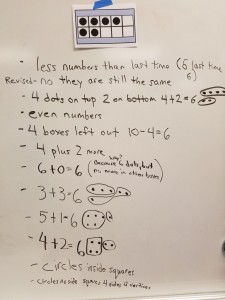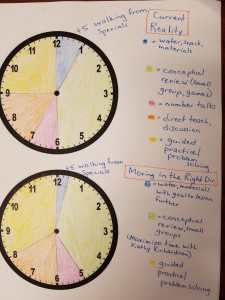Texas Facts Video
Check out this well done video by a young student!
Texas Facts Video
Check out this well done video by a young student!
Each summer I like to learn something new, usually choosing a subject focus such as reading or math. However, I want to try something different, so this year I plan to look for workshops that catch my eye or have been on my never-ending to do list. To Do list – check. That would be the book study Making Thinking Visible for the summer. I’ve already written a couple of posts. To Do list – check again – working to add readily available resources to my Writing Resources page. Eye Catcher – chaching. This came across my Facebook page: Get Your Teach On Dallas Conference. Check out the two day agenda.
I’ll attend the second through fourth grade block. The best ideas often come from our coworkers at large and this conference will give me a little bit of everything: math, reading, writing, technology, and engagement. Deeana Jump and Hope King both hold master’s degrees in education with over 10 years experience so I think I’ll come away with a lot. Deeana is going to talk about close reading, which I’ve tried, but would like to learn more. Amy Lemons will also present; it was her Facebook post that inspired me. Amy has a reading program, Rooted in Reading, where she focuses on one mentor text a week. The books she has chosen are amazing. I’ve used her idea some this past year with success. Students feel comfortable with the familiar text, showing higher engagement and thinking. In this conference, she’s going to cover math. I have great games and love to use number talks, but I’m looking forward to seeing something new.
I can’t wait to learn from these guys. Let’s be totally honest – I also look forward to Me Time, alone in a hotel room at night. Of course I’ll geek out pouring through my goodies from the day, clicking down internet rabbit holes influenced from my fresh ideas. I bet every teacher can relate.

It’s been interesting to see the growth in students this year in using Number Talks. Right now, the team is trying to encourage students to subitize and decompose numbers into its parts with ease. With this in mind, we are using ten frames to show numbers in several ways. For this segment, we have shown the number 6 in a ten frame and have now shown the same quantity in a different manner. This will be done a couple of more times with the number 6, though not necessarily in consecutive days. The first student to speak looked at what I had written about there being less dots this week than last week (I was out sick earlier this week), then as he read his statement, he said, “No, wait” and raised his hand to revise his statement. Last week the top row was full with one dot on the bottom row. Some students are still wanting to get creative with the math sentence, such as “13 – 7 = 6.” I usually ask them if that’s what they notice about the image and they will shake their heads and continue looking. Some students are eager to show 1 finger that they have a method, willing to stop there, while other students immediately have 5 or 6 fingers held to their chests to compete with how many methods they have found to explain the math image. However, they are growing. The students now know to expand on what they see with a math sentence. Perhaps this isn’t something I should ask? If a student notices 4 and 2, I’ll ask the student to come up to the board to show exactly how he/she saw 4 and 2 and explain how this would be described in a math sentence. Though, one student did look at the ten frame from a geometry perspective, I didn’t consider it a frustration since it’s one of our current spiral review objectives :).
What’s next?
I’d like to move towards the students talking to one another, asking questions, expanding or supporting one another’s statements. However, right now there is interest in different perspectives and aha moments in spotting a new way to view numbers. Also, some students aren’t sold on participating yet. I’m hoping this will come with time. Lovin’ it.

* Add 10 minutes to the yellow as our time moves beyond 1 hour and 5 (as noted) to the blue. Students return to my room after Recess and Specials back to back. They tend to be hungry and thirsty, leading to my decision to switch my snack to the afternoon, rather than the typical morning snack. Between this and a water break, I noticed some waste of learning time. Ouch! We also begin our Math block with Conceptual Review rather than ending with review. If the review went with a new game and I hadn’t taught it the day before, I gave a quick model – again wasting time so begins ideas to improve my math block. I will return to morning snack, plus model the game/review prior to the math block, either in the morning before 8 or the day before. I also noticed that Conceptual Review has time that can be given to Guided Practice, but I really need to maximize the block I’m going to shorten. Because I went to a Kathy Richardson workshop this past summer, I will blend review time, inserting her program with the goal of strengthening number sense. I’ve not used her games yet. According to our Kindergarten and First grade teams, this program is excellent without being lengthy.
New goals – reduce wasted time and giving more time to Guided Practice. Within this increase learning in Conceptual Review by incorporating a fun, effective program.
As I looked at my clock, keeping in mind Andrew Stadel’s advice to make the 20% of what we use help out 80% of what we need, I tried to think of my year end goals for my students and I fall back to number sense. Since Kathy Richardson is designed for this and doesn’t veer away from my goal of bringing curiosity into the room, then this should help as I move my students in a better direction for learning, with time well spent versus time used up.
After watching a short video by Annie Fetter, math educator at Drexel University, called “The Hurrier I Go, The Behinder I Get,” our cohort was asked to look deeply at our unit rationale and TEKS. In addition, we looked through the vocabulary, worked through big ideas of student expectations, and essential questions. Throughout I jotted notes, reflecting on what I feel I should prioritize. With the Unit Title “Applying 2-Digit Place Value Concepts and Descriptions.”
So what do I feel is most important? What I really feel is the goal of this unit is to continue the students’ journey to understanding numbers beyond its standard form, a symbol. We’re asking the students to understand to look at numbers as representing the idea of distance and quantity. Later we’ll add the ideas of time and speed. We’re helping the students to understand what the number represents. One part of this goal is the relationships between numbers in base 10 – individual units that can combine in a set pattern or proportion to groups or units of a number, unitizing. In looking at relationships, a student can compare, realizing a greater quantity or distance. In adding bars and graphs to the unit, the student is given a a real world application of using these concepts, as well as learning to reason through information, then finding an efficient method to problem-solve.
So given the 3 bold phrases which are my priorities for this unit, how do I get there?
1) The beginning of our math block will start with conversation about numbers in various ways. I plan to start small, allowing students to talk about smaller numbers/images/expressions so they can build the number sense to understand the concept of numbers. Our team has decided to have
, asking students to look at computational fluency, then look at word problems twice a week using a number talk, which may or may not include computational fluency. Many of these will be problems they can work through mentally, though some may require some concrete manipulation. District instruction shows that this takes about 10 minutes.
2) In our core time, there will be approximately 40 minutes of time given to
.
3) After this, the students will be given time to review what they have learned through
. We’ve used a lot of Fundamental games in the past two years. This year we will add games from Developing Number Concepts by Kathy Richardson. The link will take you to her 3rd book which has a focus on place value.
This year I move back into an inclusion class. It was beneficial to listen to the video about focusing on the purpose of teaching math, rather than fitting standards into a calendar.